For mental health awareness week 2025, I want to talk about masking, which is such a huge part of what is often called the ‘female autism phenotype’! Masking and trying to unmask and accept myself has such a big impact on my life, and is definitely one of the biggest contributors to poor mental health in most autistic women, so it’s a topic that needs addressing!
Firstly, what is the female autism phenotype?
The Female Autism Phenotype was a theory published in 1992 which basically described how many women may experience the same differences as autistic in men, but present them differently. It helps explain why, historically, many autistic women were misdiagnosed or went without any diagnosis at all. Further studies have shown how many autistic women present with better social awareness, are more likely to engage in reciprocal conversation, have more social motivation for friendships, participate in more group activities, use more nonverbal gestures and non literal language, have more sensory issues, and have different repetitive/restrictive behaviors.
One of the reasons behind the theory is that autistic women mask!
Personally, I do like the theory, but I don’t like how it is specific to a gender; instead I think we should just describe it as a different presentation of autism. I once listened to a really interesting Guardian science podcast which described how males can also present in the more typically female-autistic way, and females can present in the more typically male-autistic way. Gender doesn’t really need to come into it – autism can present in two quite different ways!
Anyway – what is masking?
Masking refers to the deliberate or unconscious suppression of natural behaviors and traits to appear more neurotypical, and ‘blend in’. It’s sometimes referred to as ‘camouflaging’, ‘social camouflaging’, or ‘compensatory strategies’. Research suggests autistic people learn how to mask by observing, analysing and mirroring the behaviours of others – in real life or on TV, in films, books, etc.
It can involve:
- Imitating social cues observed in others
- Avoiding stimming behaviors
- Forcing eye contact
- Mirroring dress sense and other elements of appearance
- Mimicking facial expressions and body language
- Hiding sensory sensitivities
- Not sharing interests due to a concern that they may be perceived as inappropriate or unusual (for example due to the person’s age)
- Planning in advance what you want to say to someone (known as ‘scripting’)
- Hiding sensory distress
How does it affect mental health?
Engaging in masking behaviors can lead to significant mental health challenges. Studies have shown that autistic women who mask their traits are more likely to experience:
- Increased psychological distress
- Higher levels of anxiety and depression
- Suicidal ideation
- Loss of sense of self and identity
- Low self esteem and confidence
- Burnout and exhaustion
Personally, I wish people understood just how TIRING and EXHAUSTING life can be when you’re autistic and constantly masking, even without meaning to. I am constantly, without thinking, worrying about how I seem, what people think of me, trying to pick up on social cues, trying to work out what to say and do, overthinking about what to say and what I have said or done, worrying changes or things that I didn’t expect, trying to make sense of the world and everyone in it…while everyon else’s brains switch off, mine is BUZZING and PROCESSING and it’s endless. I am always on alert.
Then, on top of that, it’s all even more TIRING and EXHAUSTING because I am also constantly hiding how I’m feeling, trying to not stim, or shut down, or have a melt down, or even just visibly show signs of what my head is going through.
The moments when I say how I’m feeling, and people adapt…they can reduce just one anxiety or thought that could’ve sat with me for hours. I describe that as deliberate unmasking. When I purposefully explain my autism.
Even better are the times when I can just ‘be me’; when I’m with people who I’m more comfortable around, who I’ve ‘unmasked’ a bit around. It’s like I subconsciouly unmask and just do what is natural to me, and my brain doesn’t get so tired.
What can we do?
We need to make the world understand and truly accept and embrace our different brains, so that autistic individuals don’t feel forced to mask and hide who they are. We also need to learn to accept and love ourselves, because it can be hard to avoid masking when you spend years of your life doing it. When you grow up in a world not set up for you, it becomes your default way of just being, and I think that’s what makes it so difficult to tackle. I will definitely sometime talk a bit about how to unmask – strategies for yourself, and strategies to ask others to try, to support you!
Articles/sources:
https://www.autism.org.uk/advice-and-guidance/topics/behaviour/masking
The Female Autism Phenotype and Camouflaging: a Narrative
Review – https://doi.org/10.1007/s40489-020-00197-9
Looking good but feeling bad: “Camouflaging” behaviors and mental health in women with autistic traits – https://doi.org/10.1177/1362361320912147
(to open images bigger, right click and open in new tab)
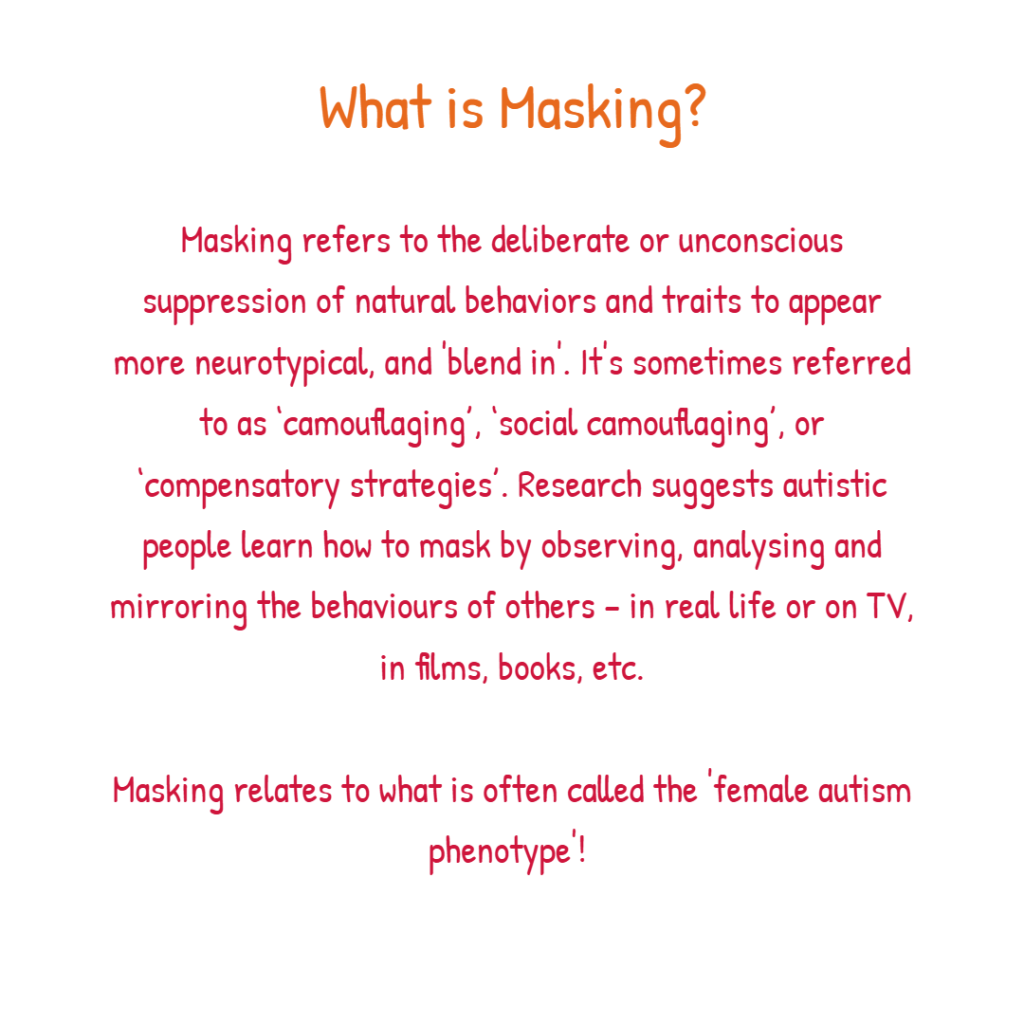
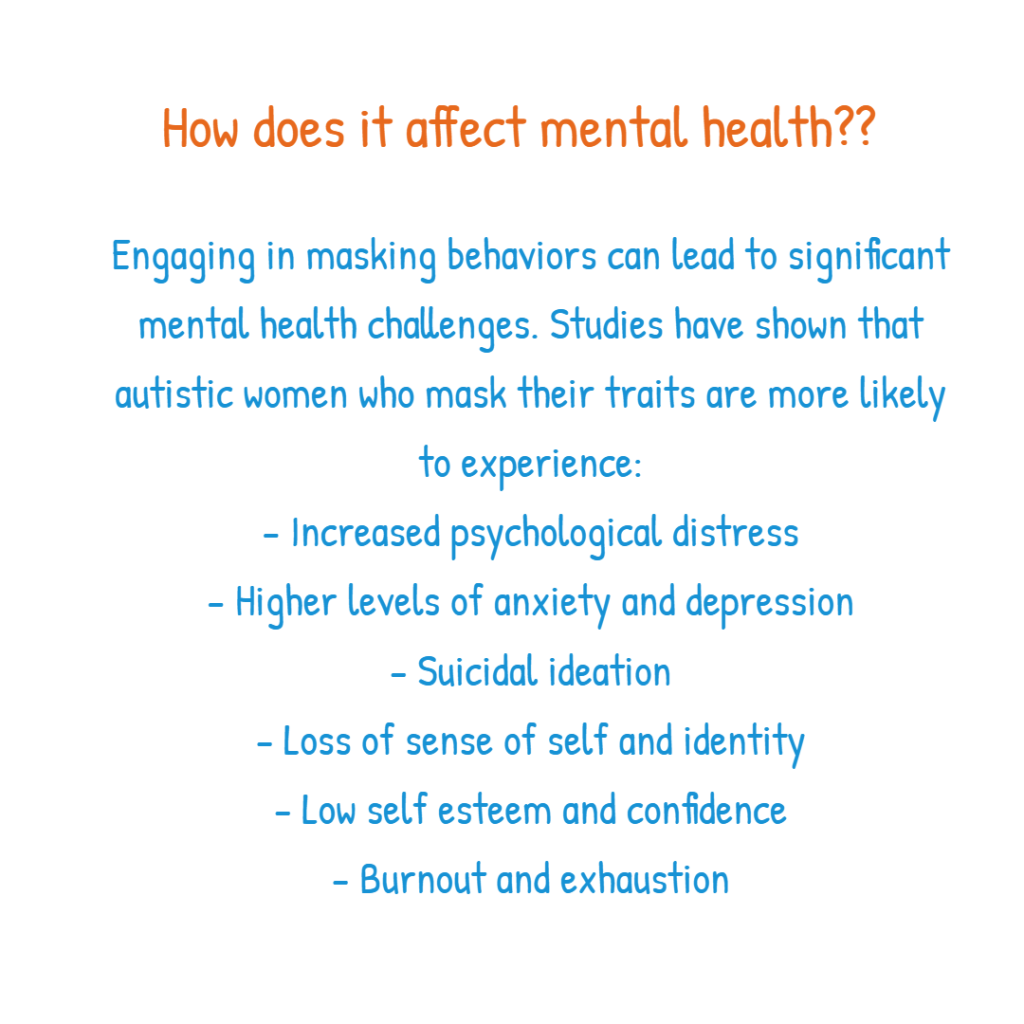
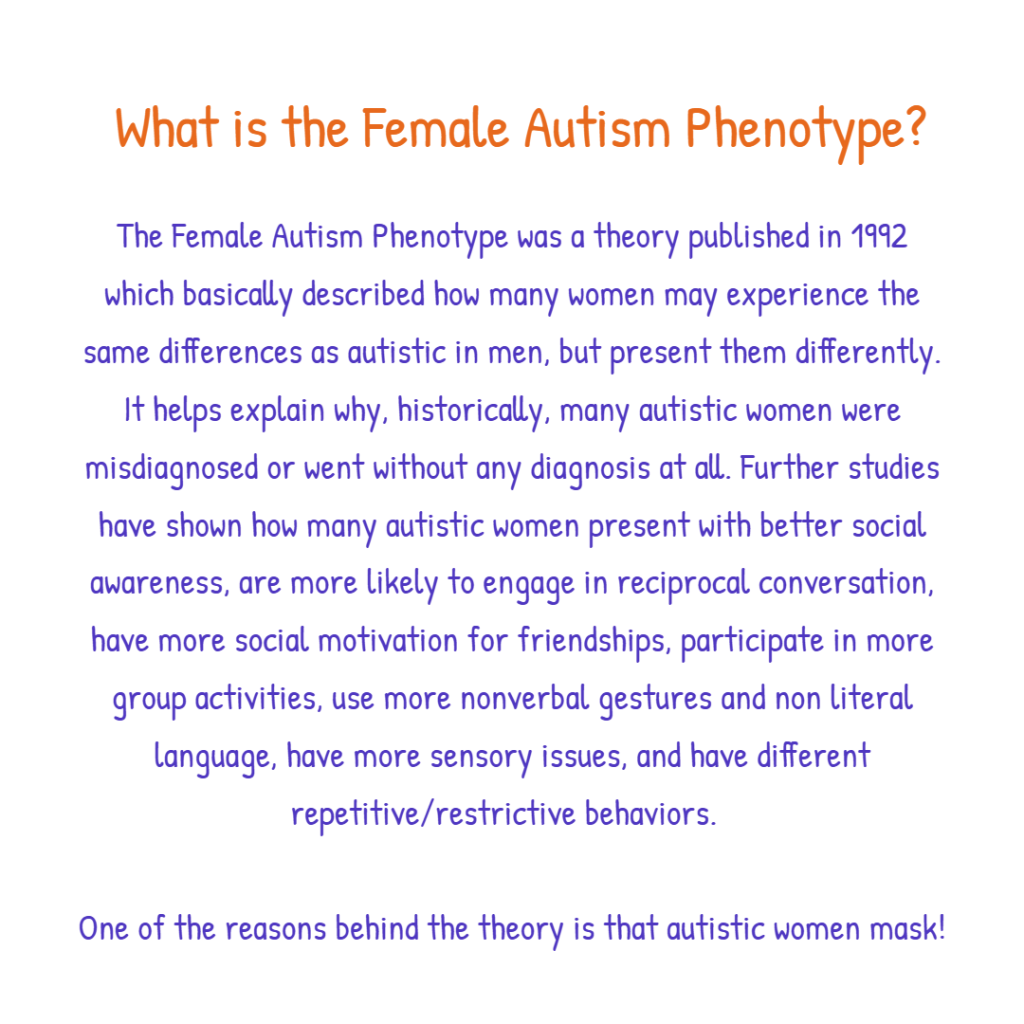
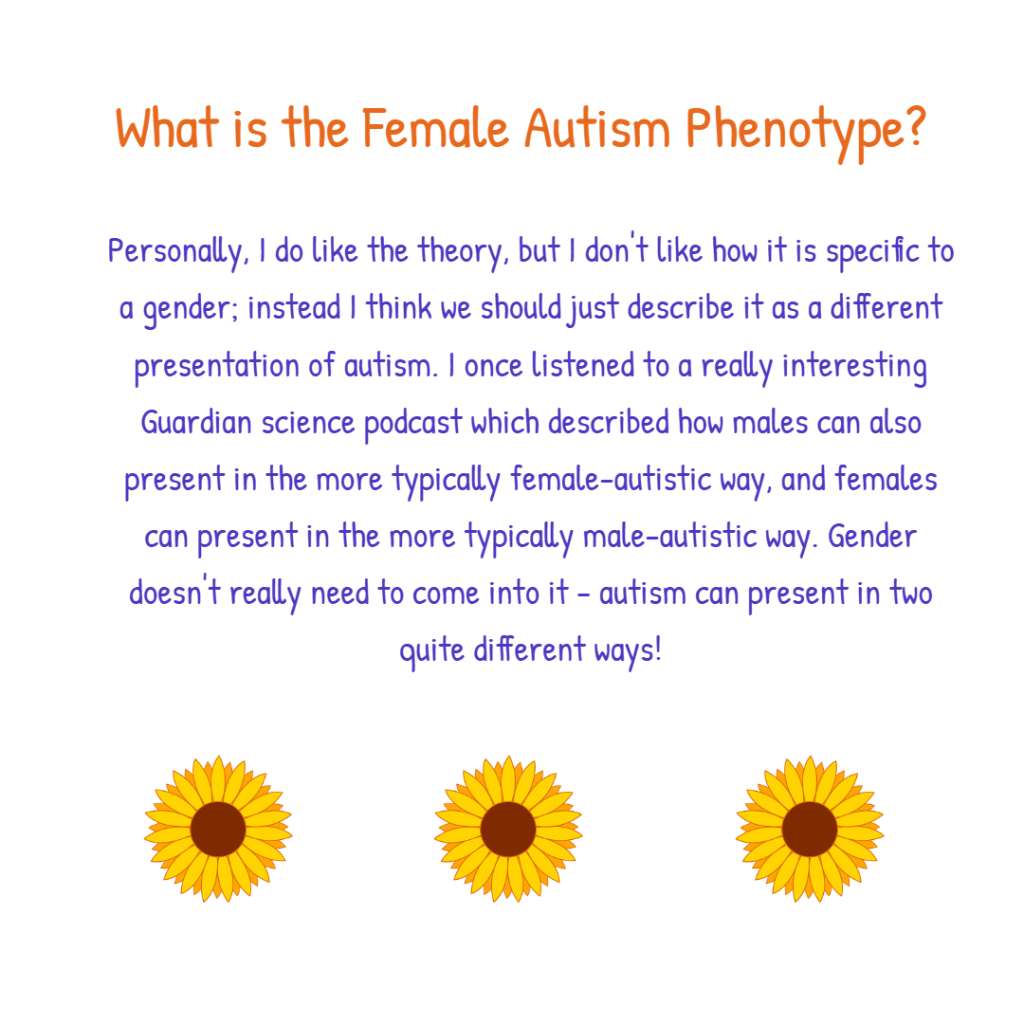
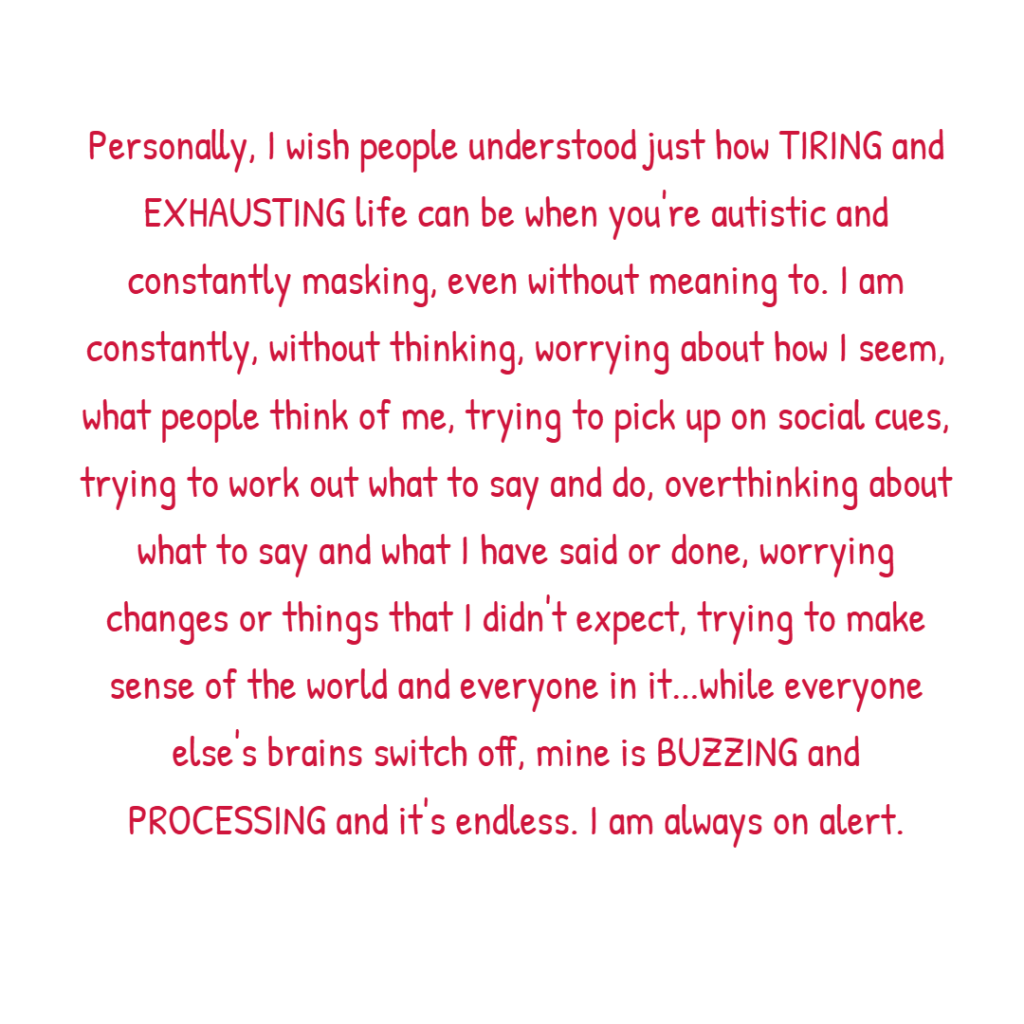
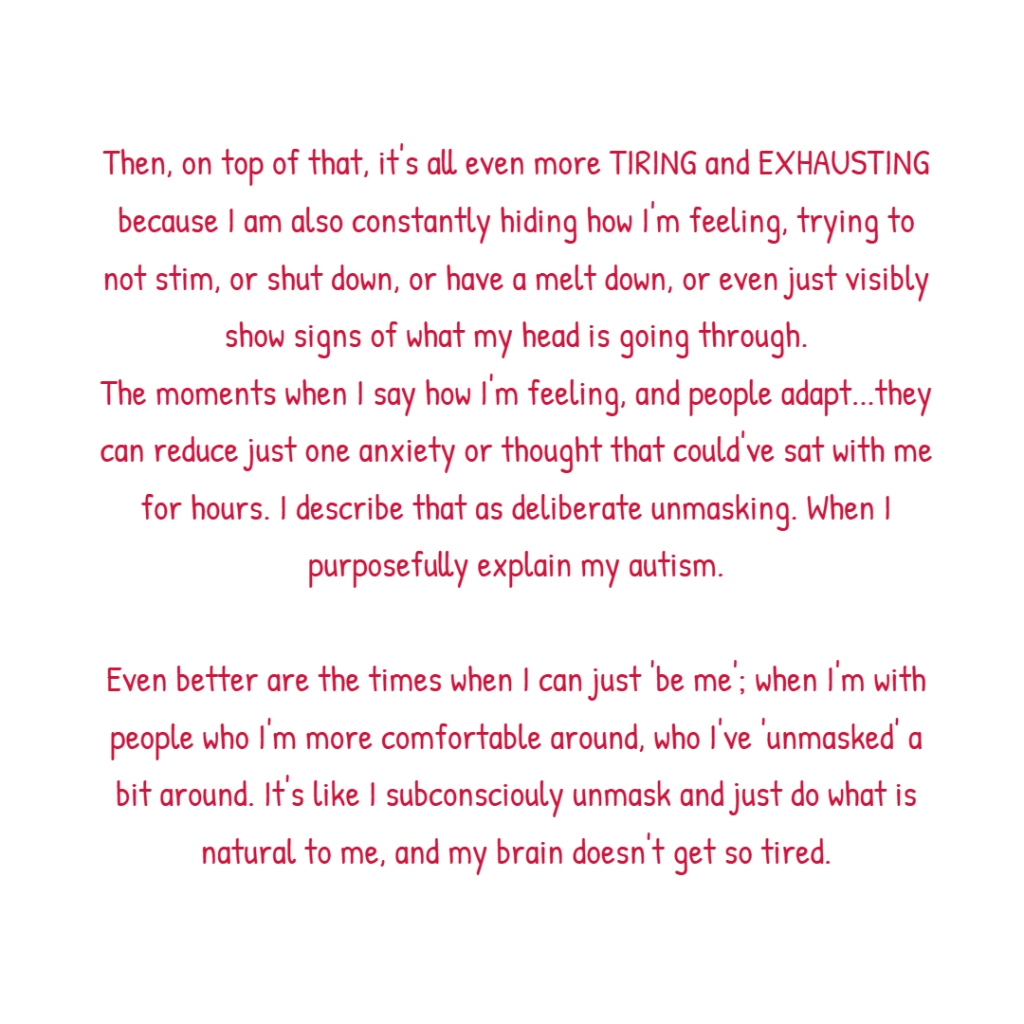
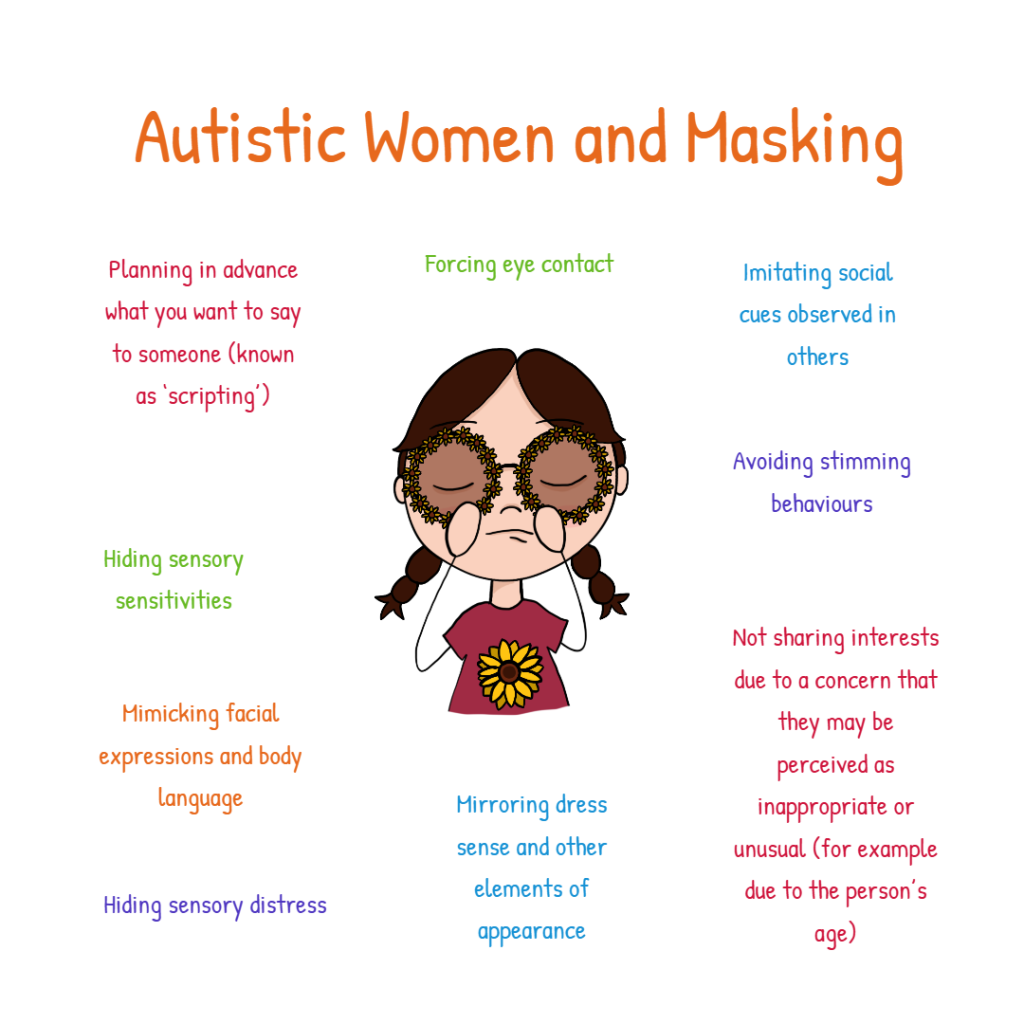
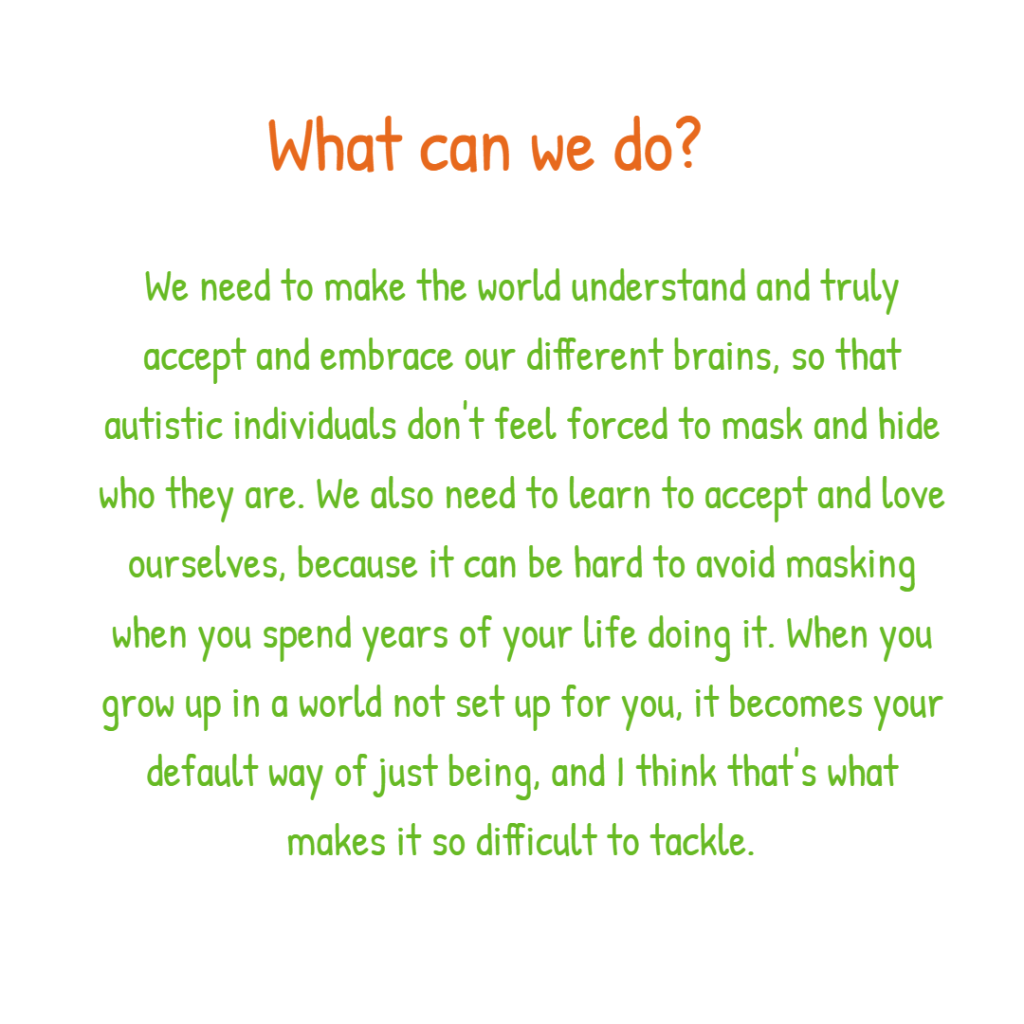
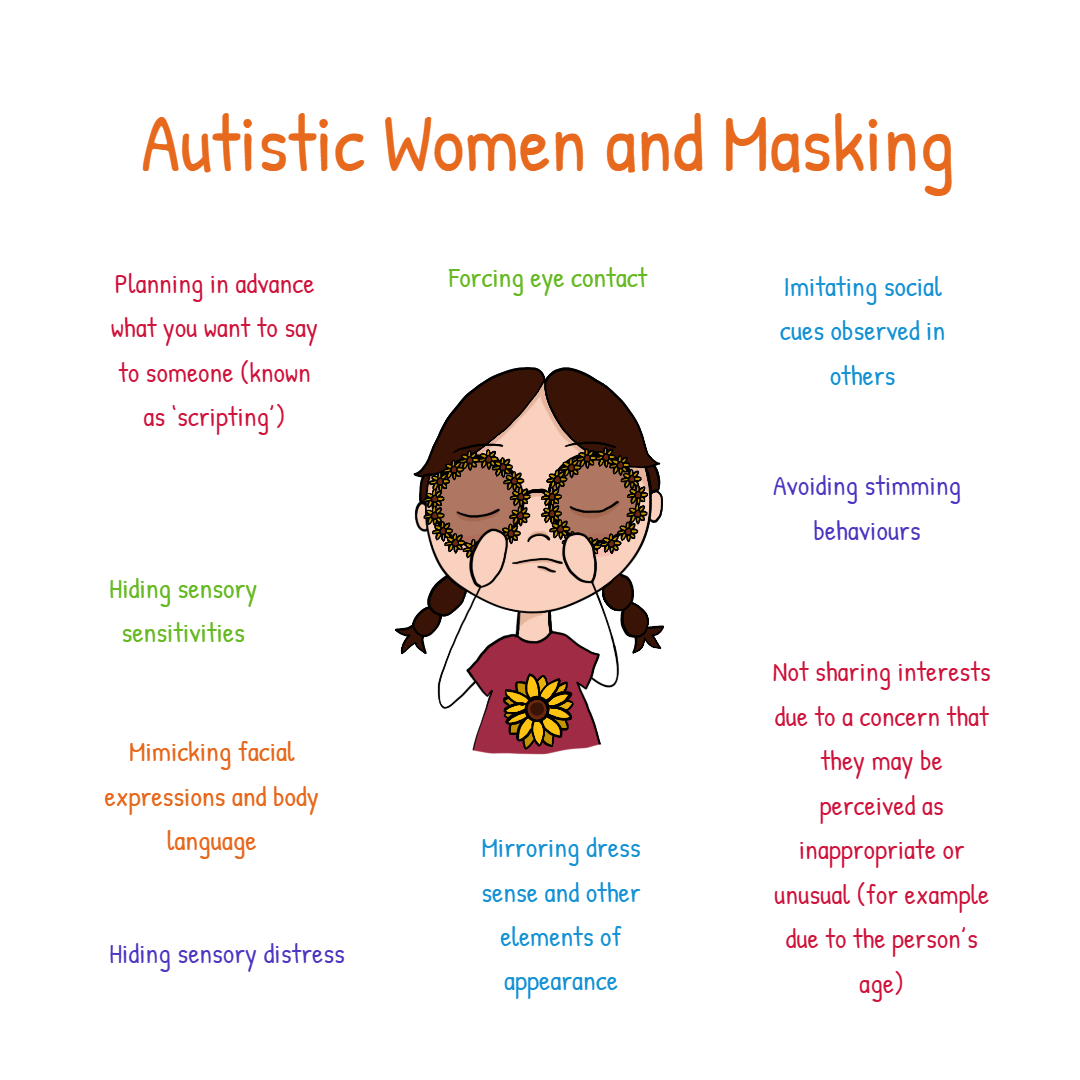
Leave a Reply